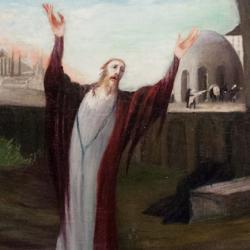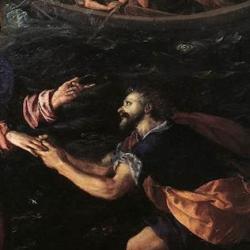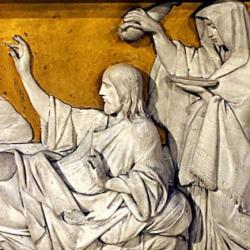INTRODUCTION
Jesus continues to do miracles of healing and deliverance. In spite of Jesus’ cautions (9:30), “news” about Him is spreading and His popularity is increasing (9:26, 31). The “crowd” (9:23, 25, 33) is growing, and growing in significance.
THE TEXT
“While He spoke these things to them, behold, a ruler came and worshiped Him, saying, ‘My daughter has just died, but come and lay Your hand on her and she will live.’ So Jesus arose and followed him, and so did His disciples . . . .” (Matthew 9:18-38).
RAISING THE DEAD
The first double miracle reminds us of the first two miracles of the cycle (8:1-13). Like the centurion, the ruler appeals to Jesus on behalf of another (9:18) and like the leper the woman with the flow of blood is cleansed from defilement (9:20; cf. Leviticus 15:25-30). Jesus again defies purity regulations, allowing Himself to be touched by the woman and taking the dead girl by the hand (v. 25). In this series of miracles, Jesus delivers from several of the major forms of impurity – leprosy, blood, death. In doing so, he raises the woman from ceremonial death and the girl from literal death. The length of the woman’s impurity (v. 20) hints at the symbolism of the passage: Jesus comes to cleanse the impure bride of Israel, to raise the Lord’s daughter from death. Because of the miracles, news spreads (v. 26).
SON OF DAVID
Matthew tells us at the beginning of his gospel that Jesus is the son of David (1:1), but the two blind men (!) are the first to recognize Him as such (9:27). When Jesus restores human capacities, He reveals His ability to restore spiritual capacities. There is hope for those who cannot “see” that He is Son of David, if they cry out to Him for healing. Why does Jesus warn the men not to spread the story (v. 30)? Jesus doesn’t do stunts. More deeply, Jesus knows that He is on a collision course with the Pharisees, and He doesn’t want that clash to reach a climax too soon. Timing is all.
CASTING OUT DEMONS
In fulfillment of the prophecies of Isaiah 35:6, Jesus looses the tongue of a dumb man, whose inability to speak was the result of demon-possession (v. 32). Jesus not only enables blind to see, but gives them speech to testify about Him. The focus of the story, though, is on the different reactions to Jesus. While the crowds marvel at the unprecedented miracle, the Pharisees grumble that Jesus is in league with the devil (v. 34). The Pharisees are not only offended that Jesus refuses to play by their rules, but are frightened by his growing popularity. Jesus’ enemies are not the “Jews” but Jewish leaders whose positions are threatened. Matthew notes the growing rift with his phrase “ their synagogues” (v. 35); when Jesus teaches in a synagogue, he enters alien territory.
SHEEP WITHOUT SHEPHERD
As Jesus travels, heals, preaches, and teaches, He sees that Israel is in disarray, as they were in the times of Ahab (cf. 1 Kings 22:17). They need a Shepherd-King, and they need laborers who will work the harvest (vv. 36-38). In the next chapter, Jesus sends the Twelve into that harvest.











